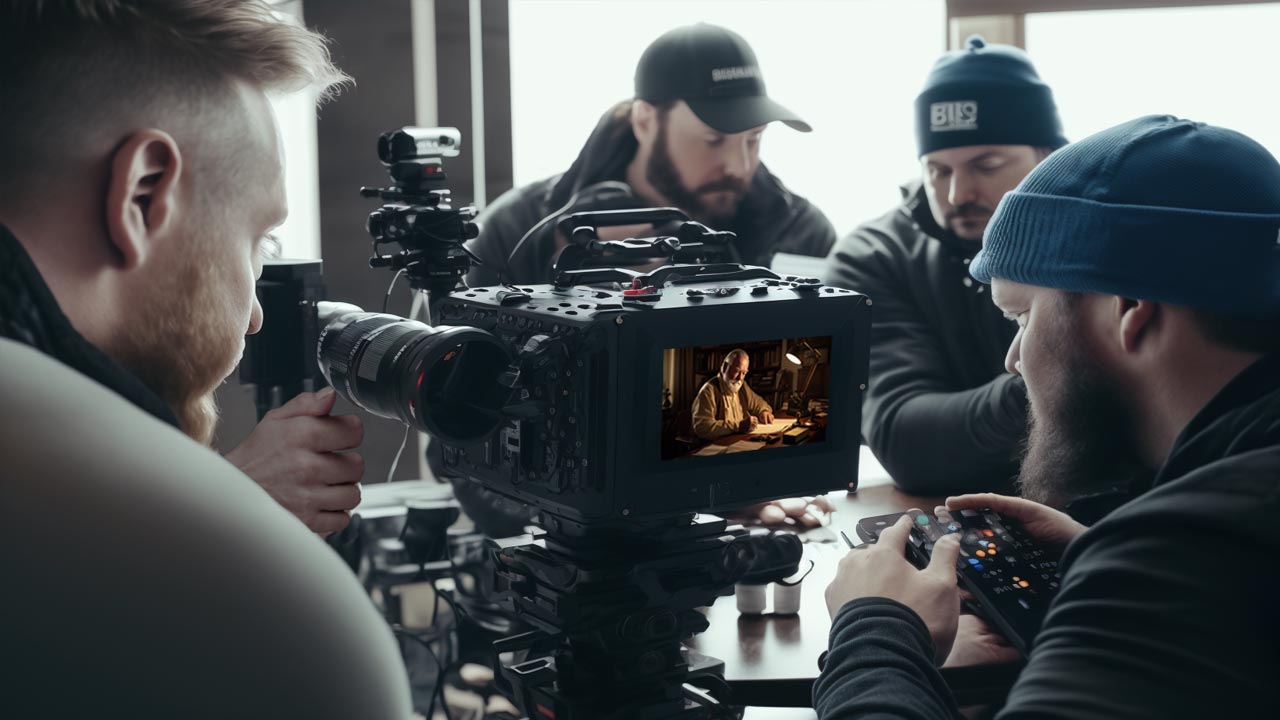В мире визуального сторителлинга грамотно составленный сценарий видео — это основа любого успешного проекта. Он служит дорожной картой для всех участников процесса, от актёров до режиссёров, и гарантирует, что ваше сообщение будет передано эффективно. Создание убедительного сценария требует сочетания креативности и структуры. В этой статье мы рассмотрим искусство превращения ваших идей в готовые к съёмке сценарии.
Сила сильной концепции
1. Поймите свою аудиторию
Прежде чем браться за сценарий, важно понять вашу целевую аудиторию. Какие у них интересы, проблемы и предпочтения? Настройка сценария так, чтобы он резонировал с вашими зрителями, — это первый шаг к вовлечению.
2. Определите своё сообщение
Каждый сценарий должен иметь ясное и лаконичное сообщение. Независимо от того, информируете ли вы, развлекаете или убеждаете, чётко сформулированное послание гарантирует, что аудитория усвоит то, что вы намерены донести.
Структура убедительного сценария
1. Начните с «крючка»
Первые моменты сценария крайне важны. Используйте «крючок» — захватывающую фразу или сцену — чтобы сразу привлечь внимание зрителей. Это задаёт тон всему видео.
2. Постройте сильный нарратив
Каждое отличное видео имеет в основе увлекательную историю. Развивайте свой сюжет с началом, серединой и концом. Создавайте напряжение, конфликты и разрешение, чтобы удерживать внимание зрителей.
3. Эффективно используйте диалоги
Диалоги должны быть естественными и отражать характеры персонажей или ведущего. Старайтесь, чтобы они были краткими и целенаправленными, избегая лишних объяснений.
Добавление вариативности в сценарий
1. Варьируйте длину предложений
Не ограничивайтесь одинаковой длиной предложений. Используйте как длинные, сложные конструкции, так и короткие, динамичные фразы. Такая вариативность создаёт ритм и делает сценарий увлекательным.
2. Добавляйте визуальные описания
Создавайте яркую картину с помощью слов. Используйте визуальные описания, чтобы режиссёр и команда понимали настроение сцены, обстановку и действия персонажей.
3. Включайте неожиданные элементы
Вариативность в сценарии часто проявляется через неожиданные повороты или моменты удивления. Эти элементы захватывают аудиторию и делают сценарий запоминающимся.
Редактирование и доработка
1. Упрощайте и уточняйте
Во время редактирования удаляйте всё лишнее. Убедитесь, что ваше сообщение остаётся ясным и лаконичным.
2. Читайте вслух
Чтение сценария вслух помогает выявить неловкие формулировки и проблемы с ритмом. Он должен естественно звучать при озвучивании.
3. Получайте обратную связь
Не стесняйтесь получать отзывы от других. Свежий взгляд поможет выявить места для улучшения, которые вы могли упустить.
В заключение
Создание убедительного сценария видео — это одновременно искусство и наука. Оно требует глубокого понимания аудитории, хорошо структурированного нарратива и доли вариативности, чтобы удерживать внимание зрителей. С практикой и вниманием к деталям ваши сценарии смогут превращать идеи в впечатляющие визуальные истории, резонирующие с вашей аудиторией.
